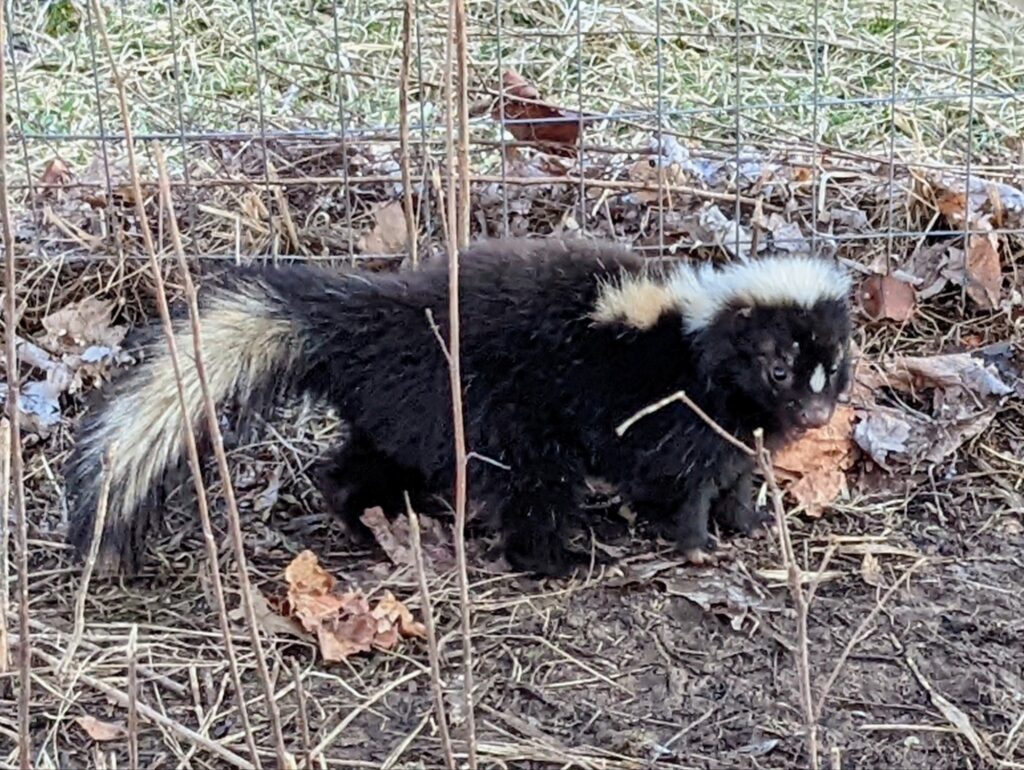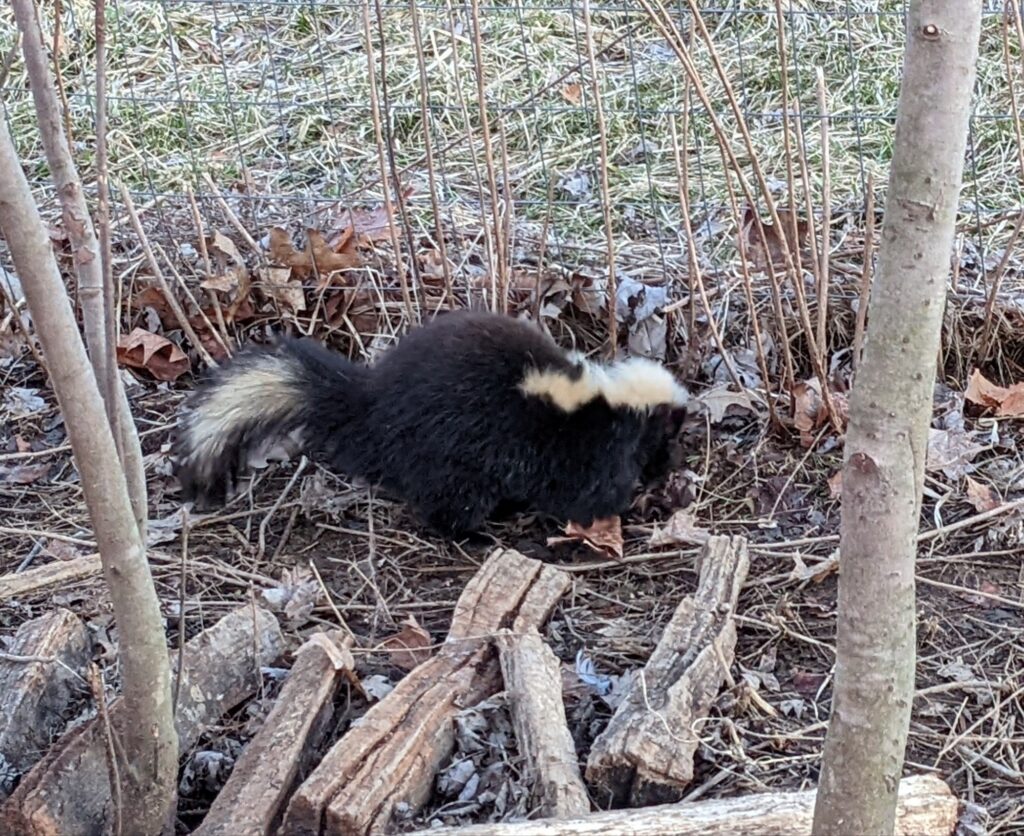
We’ve known about a skunk living under the barn’s tack room for a while. It sprayed in the barn a couple of times, then stopped (thankfully). While we didn’t necessarily want a skunk living there, we decided to just try to co-exist with it.
The skunk was polite: I surprised it once when I went into the barn and it merely acknowledged my presence and moved away. No spraying. I was, of course, incredibly relieved. The skunk was always mellow, simply ambling away if we came upon it by accident.
It left its tracks in the mud as it searched for food like grubs under small logs.

The prints were so perfectly formed, it was as if the skunk left them there on purpose, perhaps to let us know it was still around.

One spring morning, we went into the barn and found a dead skunk kit. It was just lying on the floor, mere feet away from the tack room, as if it had fallen asleep there. A visual examination failed to reveal the cause of death, as there were no obvious signs of physical injury. My guess is that it may have been poisoned by a bait left out by a neighbor to kill rodents. It was a beautiful specimen, and it was sad to think that it may have been one of the adult skunk’s progeny (skunks usually have their young in spring).
It also made me angry to think that someone may have chosen to use poison, an indiscriminate killer. There are reasonable alternatives available that don’t pose the risk of killing animals that are not the intended targets – like scavengers or domestic pets – that are better choices for dealing with a rodent problem. Improved waste and compost management are also important for preventing infestations.

While skunks may pose a danger to fowl, our birds are secured at dusk, which is when the crepuscular creature is usually out foraging. Because this is the skunk’s habitat, I think it’s my responsibility to keep the skunk out of the fowl enclosures, not remove the skunk from the property. Whether you like them or not, skunks are a part of the ecosystem and they can be beneficial, eating grubs, insects like grasshoppers, small mammals like mice, and carrion.
Each time I see the little logs by the fence moved, I hope it means the skunk was there, looking for edibles. It’s a hard life for skunks, even in the country: too many end up dead on the road as they seek mates. Put down your damned phone and watch the road! Our resident skunk just goes about its skunk business – digging in the dirt, and trying to avoid contact with us. I’ll keep a respectful distance and enjoy the occasional sighting at dusk.
It’s mating season for skunks – keep an eye out for these shy creatures crossing roadways and help them survive.
